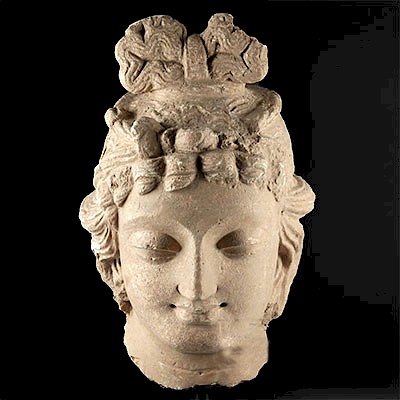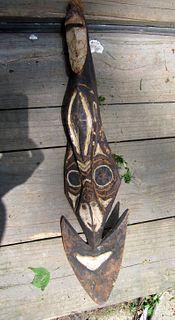Early 20th C. African Chokwe Wood, Pitch & Hide Drum
Lot 176
About Seller
Artemis Fine Arts
686 S Taylor Ave, Ste 106
Louisville, CO 80027
United States
Selling antiquities, ancient and ethnographic art online since 1993, Artemis Gallery specializes in Classical Antiquities (Egyptian, Greek, Roman, Near Eastern), Asian, Pre-Columbian, African / Tribal / Oceanographic art. Our extensive inventory includes pottery, stone, metal, wood, glass and textil...Read more
Estimate:
$2,000 - $3,000
Absentee vs Live bid
Two ways to bid:
- Leave a max absentee bid and the platform will bid on your behalf up to your maximum bid during the live auction.
- Bid live during the auction and your bids will be submitted real-time to the auctioneer.
Bid Increments
| Price | Bid Increment |
|---|---|
| $0 | $25 |
| $300 | $50 |
| $1,000 | $100 |
| $2,000 | $250 |
| $5,000 | $500 |
| $10,000 | $1,000 |
| $20,000 | $2,500 |
| $50,000 | $5,000 |
| $100,000 | $10,000 |
| $200,000 | $20,000 |
About Auction
By Artemis Fine Arts
Aug 30, 2018
Set Reminder
2018-08-30 10:00:00
2018-08-30 10:00:00
America/New_York
Bidsquare
Bidsquare : Fine Antiquities / Asian / Ethnographic Art
https://www.bidsquare.com/auctions/artemis-gallery/fine-antiquities-asian-ethnographic-art-3402
Featuring classical antiquities, Asian, ancient and ethnographic art from cultures encompassing the globe, plus fine art. Artemis Fine Arts info@artemisfinearts.com
Featuring classical antiquities, Asian, ancient and ethnographic art from cultures encompassing the globe, plus fine art. Artemis Fine Arts info@artemisfinearts.com
- Lot Description
Central Africa, Democratic Republic of the Congo, Chokwe people, ca. early 20th century CE. A carved, hourglass-shaped, double-skin covered drum with three low, vertical handles. Drums like these are called "mukupela". The surface of the drums were carved in high relief with intricate geometric patterns, concentric circles, and linear designs. This example has wave-like and concentric square patterns alongside less abstract motifs that look like eyes or stylized facial elements, all carved as incised motifs around its upper and lower body. The wood is cikamba, the skin likely from antelope, goat, or sheep. The black patch on the drum surface is made from natural rubber. Size: 10.4" W x 19" H (26.4 cm x 48.3 cm)
Royal mukupela belonged to the chief and were used to send messages to hunters and warriors as well as providing rhythms to accompany dancers during religious and social ceremonies. A seated drummer would place the mukupela horizontally in his lap and strike both heads with the palms of his hands. To tune them, they were held close to a fire to increase the tension in the skin. The shape of the natural rubber also had a major role to play in the pitch of the instrument, and it could be shaped on the fly during a playing session to change the depth of sound produced.
See a similar example from Christie's Paris, June 2009, Lots #317 and #318.
Provenance: private Santa Fe, New Mexico, USA collection
All items legal to buy/sell under U.S. Statute covering cultural patrimony Code 2600, CHAPTER 14, and are guaranteed to be as described or your money back.
A Certificate of Authenticity will accompany all winning bids.
We ship worldwide and handle all shipping in-house for your convenience.
#127303Used surface with wear from handling and age, including pitch on drum surface and small losses to the skin where it is nailed in place.Condition
- Shipping Info
-
All shipping is handled in-house for your convenience. Your invoice from Artemis Gallery will include shipping calculation instructions. If in doubt, please inquire BEFORE bidding for estimated shipping costs for individual items.
-
- Buyer's Premium



 EUR
EUR CAD
CAD AUD
AUD GBP
GBP MXN
MXN HKD
HKD CNY
CNY MYR
MYR SEK
SEK SGD
SGD CHF
CHF THB
THB

















